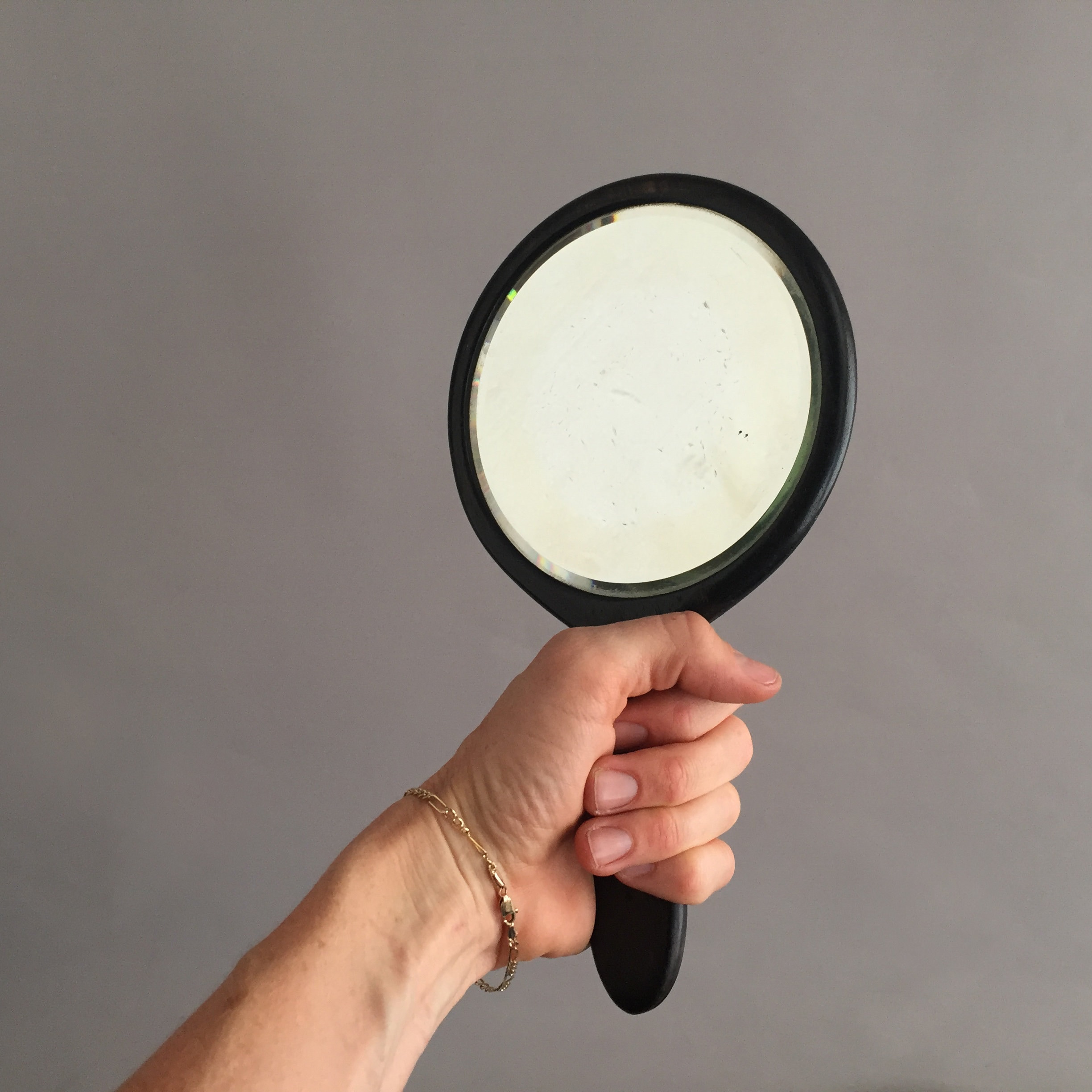
Kagami migaki 鏡磨き / kagami togi 鏡研ぎ mirror polisher in Edo In the Edo period, they became widely used by all people. Mirrors were first introduced for religious rituals, but had been used by the aristocracy for combing and make-up since the Heian period. source : - History of mirrors in Japan. Perhaps it can be said that the motifs on handled mirrors truly reflected the heart of the Edoite!

These types of mirror were known as e-kagami. The mirror discs also became larger to accommodate the increased size of ladies' hair arrangements.

A mirror with a scenic motif, such as Mount Fuji and the pine grove of Miho or the eight views of Omi, may express one's desire to see these famous sights or to travel.īy the Edo period handles, often bound in rattan, were added to Japanese brass or bronze mirrors. A mirror with one's family crest may signify the self assertion of the family or individual who used such a mirror. Japanese style mirrors / History of mirrors in JapanĮkagami, e-kagami 柄鏡 mirror with a handle In Samurai Families, on the 20 of January, the mirrors were opened for the first time, some kagami mochi offered and then ritually eaten by the womanfolk. Hatsu kagami 初鏡 "first (use of the) mirror" Kyoodai iwai 鏡台祝 celebrating the mirror stand Make sure that the handheld mirror is in line with hand-painted artwork done during the time period. The backing on most antique mirrors will be made of wood. Most old mirror glass has a yellow or gray cast to it. Most collective mirrors have a reflective silver mirror backing, which leaves random mottled spots on the mirror over time. Start by looking for clues in the mirror glass. Therefore, it can be challenging to date old mirrors. Most antique and vintage hand mirrors do not have a production date on them. How do you date antique and vintage mirrors? Other collectors focus on collecting novelty cases with collectors adding those shaped like purses, suitcases and hands to their collection. Those made by Kronheimer & Oldenbusch often had an external mirror, unlike most cases at the time. As women began to travel more, many cities began offering them with attractions on their cover. While there were some American companies who tried selling them, most of the ones prized by collectors come from Germany, Austria and Italy. Others chose to focus on collecting enamel ones. Glebeas and Golden Peacock often bringing a premium. Some collectors choose to focus on one particular brand with cases by A J Krank Manufacturing Co. Makeup companies started marketing these in the early 20th century with many soldiers sending their wives or girlfriends examples from around the world. Many people choose to collect compact mirrors. Regardless of the base material, most contain lots of ornamentation. Victorian- Many Victorian ladies held a hand mirror made of metal while others are made of mahogany.Regency- Antique mirrors from the Regency period were usually made of mahogany wood cut into either an oval or rectangle.


It was not until German chemist Justus von Liebig realized that applying a thin layer of silver to one side of a clear piece of glass gives a reflection, creating a mirror. Ancient tribesmen polished stone until they could view their reflections in them while others used polished copper.


 0 kommentar(er)
0 kommentar(er)
